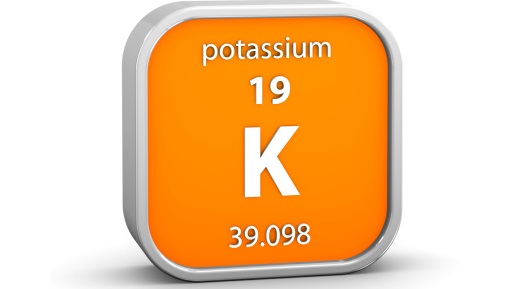
We’re always told about the dangers of high sodium—but the problem of low potassium, called hypokalemia, is actually quite serious as well, and that’s what one of our readers asked me this week.
Potassium is a mineral carried in your bloodstream that is responsible for the conduction of nerve impulses in the heart and nervous system. Under normal circumstances, the concentration of potassium in the blood is strictly controlled. If the amount of potassium in the blood drops to abnormal levels, this is known as hypokalemia and it is considered a serious medical problem.
If this is the case for you, I recommend that you consult with your health care provider regarding the best treatment options.
The most common cause for this condition is the excessive loss of potassium from the body—not nutritional deficiency. The reason why most people have low levels of potassium is typically attributed to the use of diuretic drugs to treat high blood pressure. Other causes include chronic kidney disease, diarrhea, laxative abuse, and rare metabolic diseases.
Hypokalemia is a not a condition that you can treat with diet alone. This is a potentially dangerous condition which can lead to heart arrhythmias and cardiac failure.
Now, the previous discussion dealt with the absolute levels of potassium being reduced, but most people have a relative decrease in potassium levels. This decrease is relative to the relationship to sodium intake.
Sodium and potassium are in constant flux in order to control your blood pressure. Previous research has clearly indicated that high levels of sodium relative to potassium are an important risk factor in the development of hypertension.
In order to reduce the risk of high blood pressure, people should reduce their intake of sodium from fast foods, canned, frozen and snack foods but also increase their intake of potassium-rich foods like whole grains, legumes, fruits, nuts, and seeds.
Most Americans consume 3,300 mg of sodium per day and 2,600 mg of potassium per day.
However, the actual recommended intake of sodium is 2,000 mg (or less) per day and 4,700 mg (or more) of potassium per day!
To increase the ratio of potassium to sodium, choose to consume a diet higher in whole, unprocessed foods like vegetables (fresh or frozen); whole grains like oatmeal, quinoa, or brown rice; fruit (fresh or frozen); fish; fresh poultry, nuts, and seeds; and fresh dairy products like yogurt and cottage cheese.
These foods are not only higher in potassium but also tend to be lower in sodium. If you want to eat something a little more salty, try adding a small amount of potassium chloride which will provide more potassium in your diet while adding a saltier flavor to your food.
Sources:
“Low potassium,”Mayo Clinic web site; http://www.mayoclinic.com/health/low-potassium/MY00760,last accessed Nov.11, 2013.
“Sodium/Potassium ratio linked to cardiovascular disease risk,” National Institute of Health web site; http://www.nih.gov/researchmatters/january2009/01262009hypertension.htm,last accessed Nov.11, 2013.













